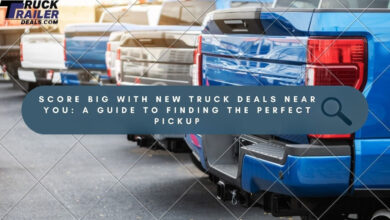Buying a car requires a lot of research and efforts but does it have to be daunting and stressing. Not at all. There are a few things which are very important for beginners who are buying a car for the first and don’t know anything about vehicles.
In this article, we will discuss share the most important information you should know before you buy a car.
Begin by evaluating your driving needs. Why are you buying the car? What do you want to achieve by buying a car? It can be high status, a specific driving need or something else. But whatever it is, make certain you are clear about it.
Below are some of the most important questions which will help you make a better decision when buying a car:
How many passengers do you carry at a time?
If you have to carry 4 passengers (adults) a subcompact SUV is perfect for you. Honda CR-V is a good example of a compact crossover. A mid-size sedan or hatchback like Honda Civic Type R will also suit your need.
If you want to accommodate five adults comfortably with a lot of headroom and legroom then we will recommend you to buy a full-size sedan such as Honda Accord or Toyota Camry. A compact crossover such as Honda CR-V or Toyota RAV 4 will also provide comfortable seating position for five adults.
If you want to accommodate a lot of passengers, from 6-8, consider buying a minivan or a mid-size SUV. These vehicles have three rows to accommodate a lot of people.
Do you need a lot of cargo space?
If you want plenty of cargo space then consider buying an SUV because these feature a lot of space on the back behind the second and third row. You can even fold the rows in the back to extend the cargo space. For hauling tall items such as your kid’s bicycle, which may not fit into the trunk of a sedan, an SUV will provide a lot of space as the seats can be folded.
A mid-size SUV like Honda Pilot provides a whopping 83.9 cubic feet of space when you fold both the rows behind the first row. So, if cargo space is important for you to consider buying an SUV, hatchback or a minivan,
What features are important to you?
Each vehicle comes with a different set of features. Minivans and mid-size SUVs usually come with an array of family-friendly features and functions such as cabin talk, a feature which allows you to talk to passengers in back rows and cabin watch, a feature which enables you to watch passengers in the back row.
Similarly, hatchbacks are stylish and agile, while coupe attracts the young audience.
Vehicles today are extremely tempting and it is not difficult to get carried away when you are at a car showroom, so we will recommend you to stay practical and logical throughout your buying journey, especially if you are on a limited budget.
Do you need an all-wheel-drive, two-wheel drive or a four-wheel drive?
Both two-wheel drive and four-wheel drive are quite old, whereas AWD is relatively a newer technology. These are different drivetrain system and they decide how much power is distributed to different wheels.
Two-wheel drive: Two-wheel drive means the engine provides acceleration to the front or rear wheel. Rear-wheel drive is commonly found in high-performance vehicles, while front-wheel drive is the most common drive train system in vehicles all around the world especially sedans.
Four-wheel drive: This drivetrain system is common in trucks and SUVs. The purpose of 4WD is to provide equal acceleration to all the wheels which help the tyre maintain an ideal level of tractions on different surfaces such as sand, mud or rocks. This drivetrain system is popular among SUV drivers who like to drive in off-road conditions. A combination of best rated SUV tyres and 4WD can take on any terrain without losing traction.
All-wheel drive: This drivetrain system is newer than the other two and is found in a wide variety of body styles, from sedan and coupes to hatchbacks and SUVs. In AWD, the system is automated and it decides which wheel should receive more power. Unlike 4WD where acceleration is equal, In AWD, the power distribution varies. For instance, if the rear wheels require less power to maintain traction, the engine will give them less power.


